Tumamoc Hill, the Desert Laboratory, and Tumamoc Resilience Garden
Tumamoc Hill, or Cemamagi Du’ag (O’odham), “Horned Lizard Mountain” is a 700’ high hill of volcanic rock with prominent cultural and sacred significance, along with pre-historic, historic, and contemporary water-harvesting systems.
Tumamoc Hill is also an 860-acre ecological/research reserve just west of downtown Tucson.
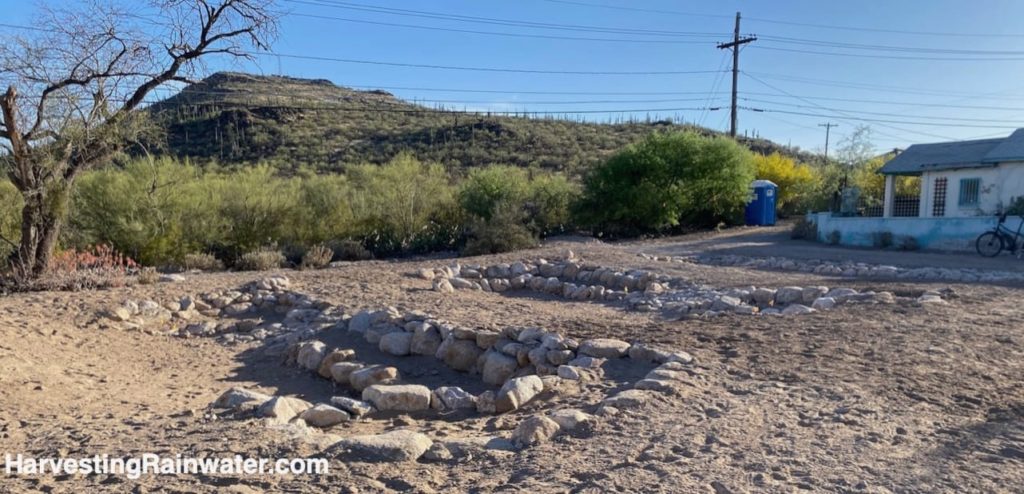
Scroll down to see a video of how well all these basins worked when they captured all the runoff from a water pipe that broke upstream, and where in the next big rain event runoff from the Hill will flow.
Photo: Brad Lancaster 4-2022
The horned lizard, after which the Tumamoc Hill was named, has evolved to harvest rainwater off its back, from which water runs down gutters between the lizard’s scales to its mouth.
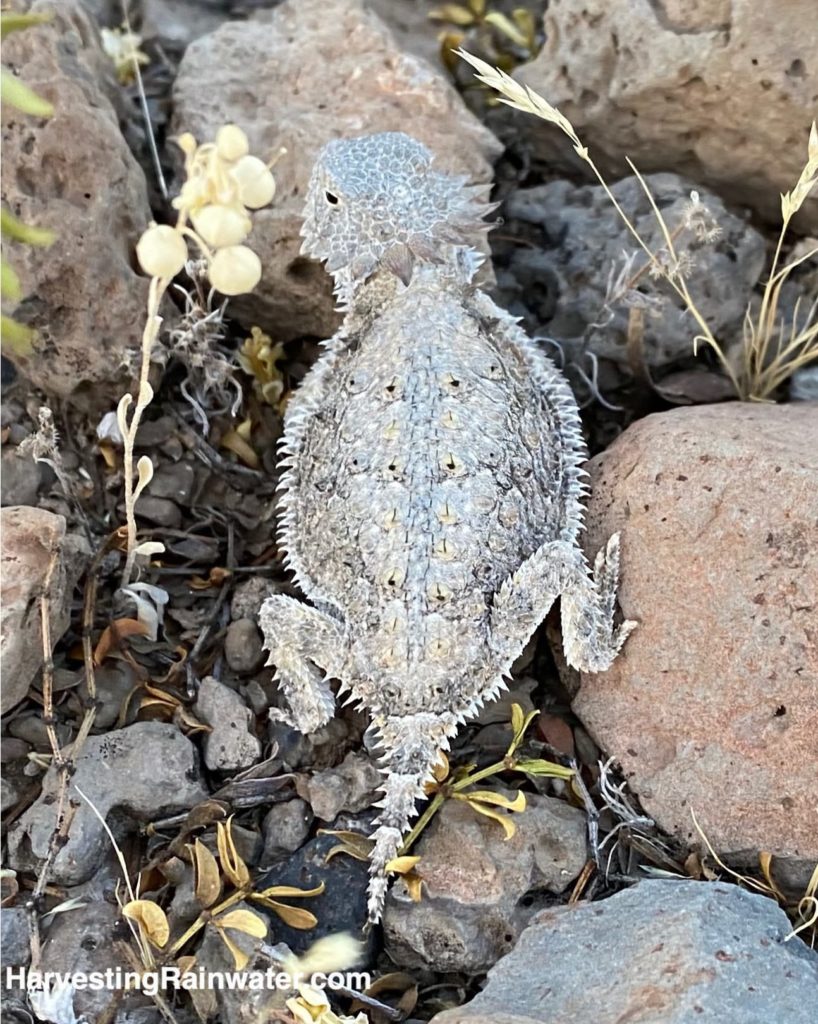
Photo: Brad Lancaster
Ancient people harvested runoff water on the hill’s slopes with stone trincheras/terraces that grew agave and other food crops. In the early 1900s when the Desert Laboratoy’s main building was built, roof runoff started to be harvested from the roof within a mortared stone cistern.
And the Tumamoc Resilience Garden being developed at the base of the Hill today has a foundation of passive water-harvesting earthworks that plants the rain and stormwater runoff.
Video of Tumamoc Resilience Garden water-harvesting earthworks (yet to be planted)
Tumamoc Hill historical timeline
You can walk up the hill (1.5 mile to the top) for a good workout and beautiful views via its paved road (not open to cars or bicycles), as about a thousand people a day do.
All the way up the hill is a rich diversity of food- and medicinal-bearing native plants that can inspire/inform your home and neighborhood plantings. (In the Sonoran Desert there are over 400 native food-bearing plants).
Historic active rainwater harvesting system
Midway up the hill is the main Desert Laboratory building complex began in 1905. There, on the south side of the largest and U-shaped building, is an historic active rainwater harvesting system that has recently been renovated for use today.
Note that water is gravity-fed to the tank from the building’s roof gutter via wet system plumbing painted green.
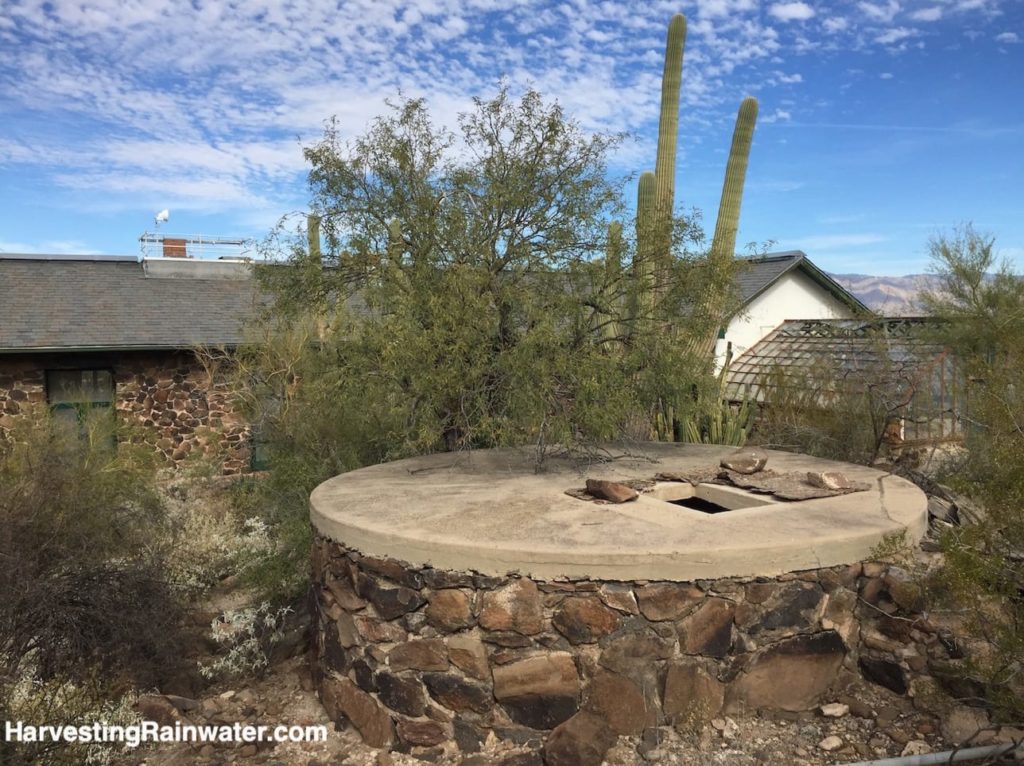
Photo: Brad Lancaster
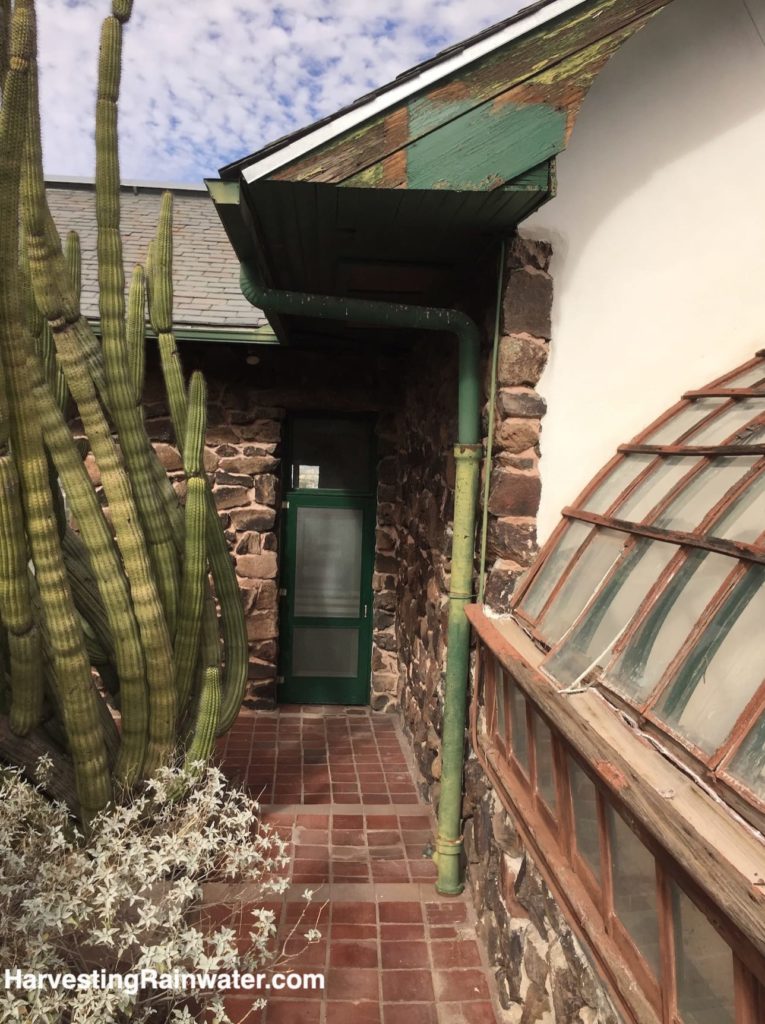
Note the organ-pipe cactus to the left. Tumamoc Hill has a banana-belt microclimate in that it is warmer than the surrounding Tucson Basin, so less cold-tolerant plants such as the organ-pipe cactus can grow there without frost/freezing damage/death.
Photo: Brad Lancaster, 12-2016 pre-renovation.
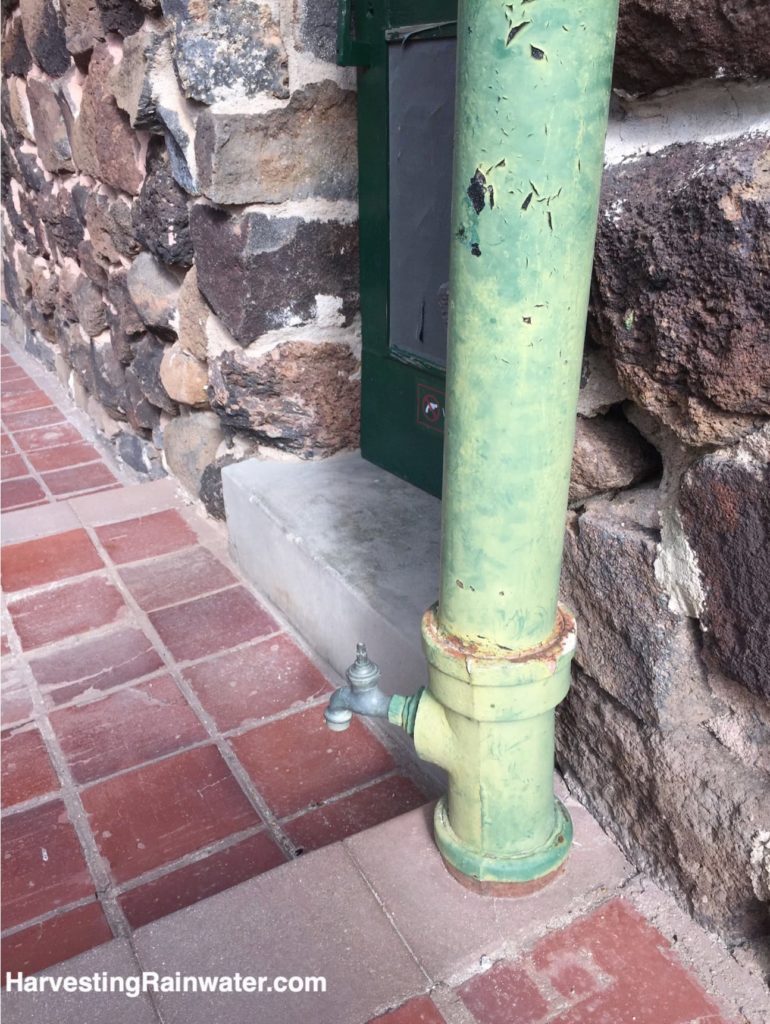
Photo: Brad Lancaster 12-15-2016
All plantings below the cistern can be passively irrigated with a gravity-fed irrigation system. Much cheaper and simpler than a pumped system (the cistern’s pump box is currently a pack rat midden).
All the way up the hill is a rich diversity of food- and medicinal-bearing native plants that can inspire your home and neighborhood plantings. (In the Sonoran Desert there are over 400 native food-bearing plants).
Where:
Intersection of Tumamoc Hill Road and West Anklam Road, Tucson, Arizona 85745
32.226020645481455, -111.00099083540287
Hours: 4am – 10pm
Cost: Free
No pets allowed
Related sites
For another historical rainwater cistern/tank site see the Historic Rainwater-Harvesting Systems at the Shrine of Santa Rita in Vail, Arizona
This location is included in the following tours:
See the new, full-color, revised editions of Brad’s award-winning books
– available a deep discount, direct from Brad:

Volume 1

